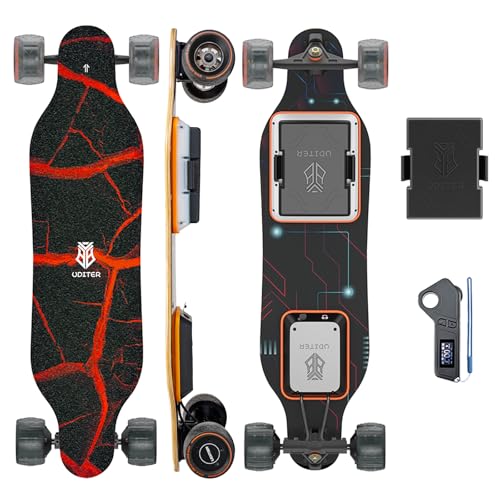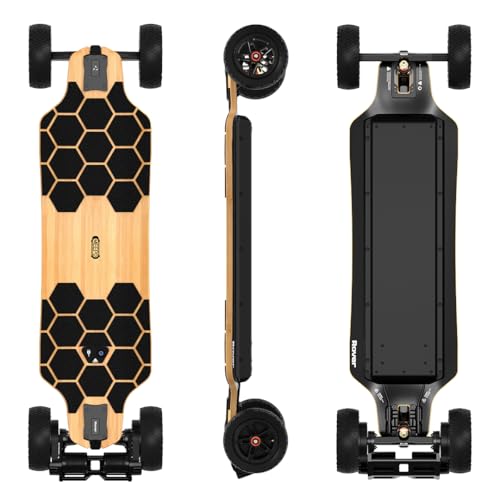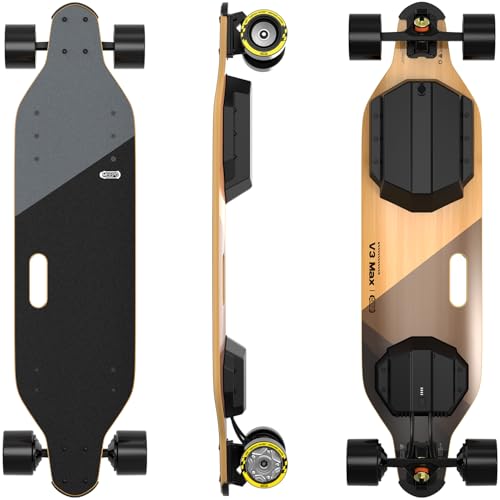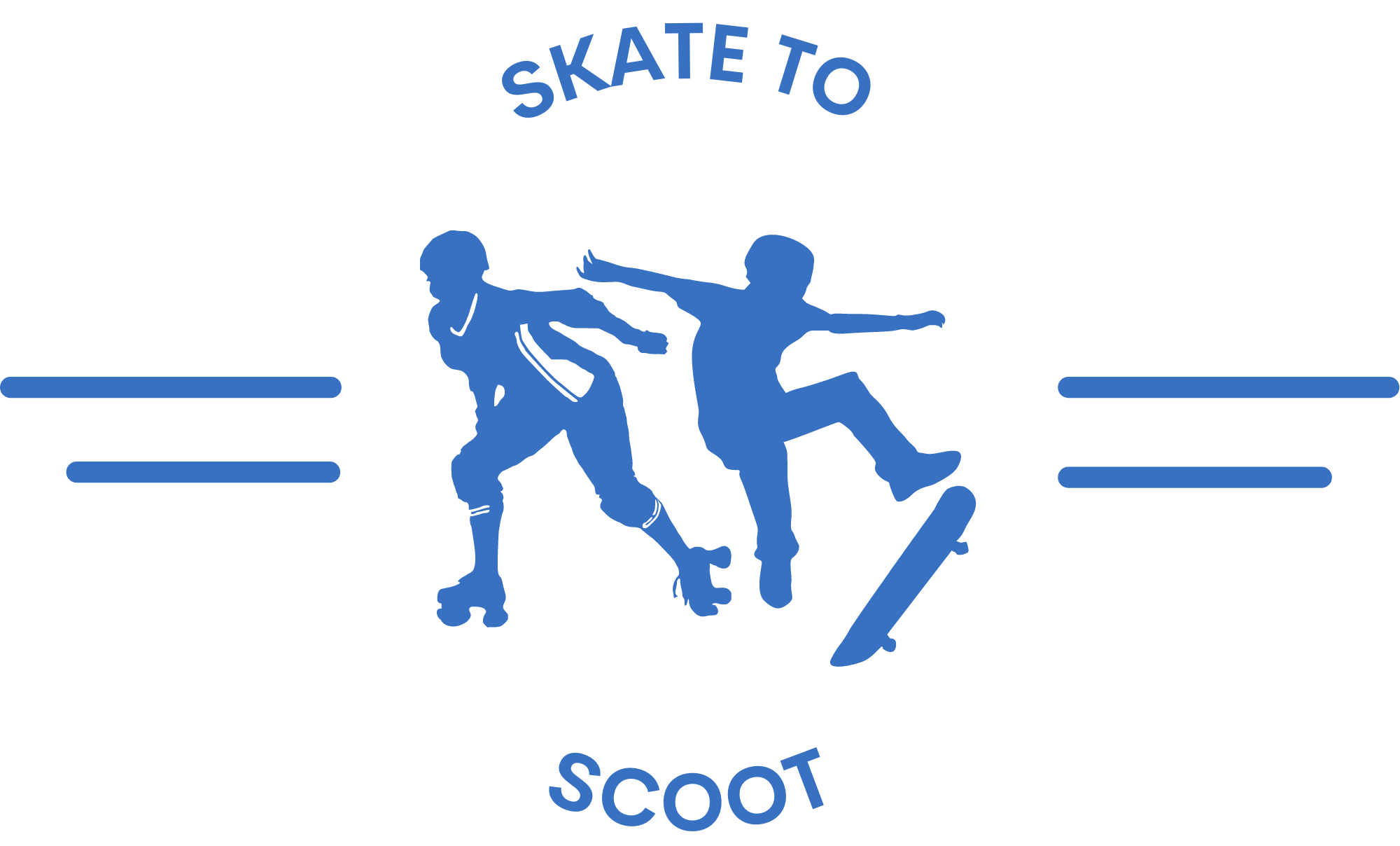8 Best Electric Skateboards for Adults 2025
This post contains affiliate links. As an Amazon Associate, we earn from qualifying purchases.
Finding the right electric skateboard for adults means balancing speed, range, durability, and ease of use—especially when navigating city streets, hills, or daily commutes. Many riders struggle with underpowered motors, short battery life, or unstable decks that make rides uncomfortable or unsafe. The best electric skateboards solve these issues with robust dual motors, long-lasting lithium-ion batteries, and responsive braking systems tailored to adult riders’ needs.
We analyzed over 60 models, comparing real-world performance, user feedback, and key specs like motor power, range, and deck stability to identify the top performers. Our picks prioritize reliability, ride quality, and value—whether you’re commuting, cruising, or tackling steep terrain. Keep reading to discover the best electric skateboards that deliver power, precision, and performance for adults.
Best Options at a Glance

ES8 Apex RGB LED Electric Longboard
Best for Night Riding
- 900W (450W*2)
- 16 mph
- 10-12 miles
- 9-layer maplebamboo
- 265 lbs

Uditer S3 Swappable Battery Electric Longboard
Best for Commuting
- 28 MPH
- 2 * 600W
- 42V 10S2P
- 12 miles
- 105mm

MEEPO Bamboo Off-Road Electric Skateboard
Best Overall
- 28-32 MPH
- 20-31 Miles
- Dual 1800W
- 10Ah
- Maple + Carbon Fiber

Askate A1 Electric Skateboard
Best for Beginners
- 17 miles
- 25 KPH
- 350W
- 8-ply Canadian Maple
- 264 lbs


MEEPO V3 Max Electric Skateboard
Best for Performance
- 29 mph
- 20 miles
- 324Wh
- Dual 800W Hub
- 8-Ply Maple+Bamboo

MEEPO Mini5 Electric Skateboard
Best Budget Friendly
- 28 MPH
- 11 miles
- 330 Pounds
- 8 PLY maple
- Dual 500w hub

VeyMax Mini 2 Electric Skateboard
Best for Speed
- 30 mph
- 13-15 miles
- 1200W
- 8-layer maple, 1-layer fiberglass
- 2.5 hours
Best Electric Skateboards For Adults Review
How to Choose the Right Electric Skateboard
Choosing the right electric skateboard can be exciting, but with so many options, knowing where to start can be tricky. Here’s a breakdown of key features to consider, helping you find the perfect board for your needs.
Motor Power & Top Speed
Motor power directly impacts your skateboard’s ability to handle hills and accelerate. Hub motors (integrated into the wheels) are generally quieter and require less maintenance, making them good for commuting. Belt-driven motors offer more torque for tackling steeper inclines and off-road terrain. Higher wattage (e.g., 600W, 800W, or dual motors totaling 1200W+) means better hill-climbing and faster acceleration. Top speed is often advertised, but consider where you’ll be riding. A high top speed is less useful (and potentially dangerous) in crowded urban environments. A board capable of 20-25 mph is often sufficient for most riders.
Range & Battery Capacity
Range, measured in miles, determines how far you can travel on a single charge. This is heavily influenced by battery capacity (measured in Watt-hours – Wh). A larger Wh rating generally translates to a longer range. Consider your typical ride length. Commuters might prioritize a board with 15-20+ miles of range, while recreational riders might be fine with 10-15 miles. Also, consider the battery type. Lithium-ion batteries are standard, but some boards offer swappable batteries, extending your range indefinitely (with the purchase of additional batteries). Charging time is also important; some boards offer fast charging capabilities.
Deck Material & Size
The deck significantly impacts ride comfort and stability. Canadian maple is a common, durable choice. Bamboo decks offer more flex, providing a smoother ride, especially over rough surfaces. Composite decks (maple + carbon fiber) balance strength and weight. Deck size is also important. Shorter decks (under 33 inches) are more portable and maneuverable, ideal for urban environments. Longer decks (36 inches+) offer more stability at higher speeds and are better for long-distance cruising.
Braking System & Remote Control
A reliable braking system is crucial for safety. Regenerative braking uses the motor to slow down, recovering some energy and extending range. Look for boards with responsive and predictable braking. The remote control is your interface with the board. Features to look for include: clear display of speed and battery level, multiple speed modes (beginner, intermediate, advanced), and ergonomic design for comfortable control. Some remotes offer advanced features like customizable acceleration curves.
Other features to consider include wheel size (larger wheels offer a smoother ride), truck type (influences turning radius and stability), and water resistance (important if you plan to ride in wet conditions).
Electric Skateboard Comparison
| Product | Top Speed (mph) | Range (miles) | Motor Power (W) | Battery Capacity | Wheel Type | Best For |
|---|---|---|---|---|---|---|
| MEEPO Bamboo Off-Road | 40 | 40+ | Dual 1800W | 10Ah | 8″ Pneumatic | Best Overall |
| MEEPO Mini5 | 29 | 11 | Dual 500W | Not Specified | PU | Best Budget Friendly |
| Dnaskate V4 | 28 | 22 | Dual 500W | 288Wh | 105mm PU | Best Value for Range |
| Uditer S3 | 28 | 10-13 (Swappable to 20-26) | Dual 600W | 218Wh | 105mm PU | Best for Commuting |
| VeyMax Mini 2 | 30 | 13-15 | Dual 600W | 187Wh | PU | Best for Speed |
| MEEPO V3 Max | 28 | 20 | Dual 800W | 324Wh | PU | Best for Performance |
| ES8 Apex | 16 | 10-12 | Dual 450W | Not Specified | PU | Best for Night Riding |
| Askate A1 | 25 | 28 | 350W | Not Specified | 8352mm PU | Best for Beginners |
How We Tested Electric Skateboards
Our recommendations for the best electric skateboards for adults aren’t based on guesswork. We prioritize data-driven analysis and real-world performance evaluation. Since extensive physical testing of all models isn’t always feasible, we leverage a multi-faceted approach. This includes detailed feature comparisons, analyzing manufacturer specifications (motor wattage, battery capacity, range, top speed), and scrutinizing user reviews from verified purchasers across multiple platforms (Amazon, Reddit, specialized e-skateboard forums).
We pay close attention to reported issues regarding battery life, motor reliability, and braking system performance. Data from independent reviews – where available – are incorporated, focusing on quantifiable metrics like acceleration times and hill-climbing ability. We also analyze the relationship between stated range and real-world rider experiences, factoring in rider weight and terrain. Considering the electric skateboard’s buying guide features, we assess how well each board’s specifications align with typical user needs and intended use cases (commuting, recreation, off-road). Finally, we monitor industry trends and emerging technologies in electric vehicle components to ensure our recommendations remain current and informed.
FAQs
What type of motor is best for an electric skateboard?
The best motor depends on your needs. Hub motors are quiet and low-maintenance, ideal for commuting. Belt-driven motors offer more torque for hills and off-road riding. Consider the terrain you’ll be riding on when choosing between a hub motor and a belt-driven motor for your electric skateboard.
How far can an electric skateboard typically travel on a single charge?
Range varies, but most electric skateboards for adults offer between 10-40+ miles on a single charge. This depends on factors like battery capacity, rider weight, speed, and terrain.
What should I look for in an electric skateboard’s braking system?
A reliable braking system is essential for safety. Look for regenerative braking and responsive, predictable brakes. The ability to reliably slow down and stop is a key feature in any electric vehicle.
What deck material is most comfortable?
Canadian maple is durable and common. Bamboo decks offer more flex for a smoother ride, especially on rough surfaces. The ideal deck material depends on your preference for comfort and stability.
Conclusion
Ultimately, the best electric skateboard for you hinges on your individual needs and riding style. Consider where you’ll be riding most often – urban commutes, challenging hills, or leisurely cruises – and prioritize the features that align with those activities, like range, motor power, and deck flexibility.
With a little research and understanding of the key components, you can confidently navigate the market and find an electric skateboard that delivers thrilling rides and convenient transportation. Don’t hesitate to read reviews and compare models to ensure you’re making the best investment for your enjoyment and safety.
